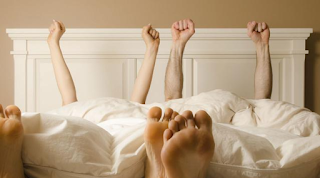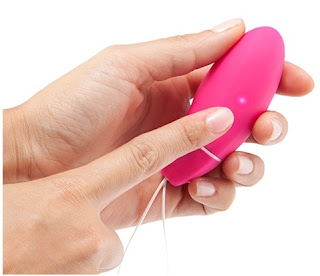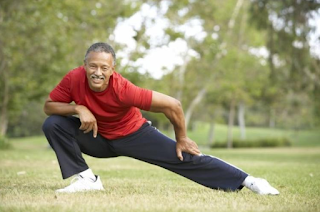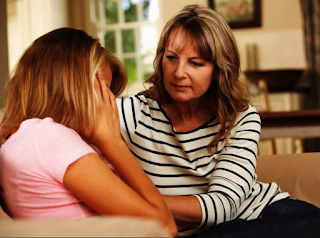The infamous coconut oil is back the news! I’m not a coconut oil hater, nor do I believe the hype that its gazillion benefits are all fluff. On the contrary, I love coconut oil and use it for many things, including face moisturizer, hair wash, cooking, body lotion, massage lotion, and (we’re all thinking it!) lube. At least, I used to use it for lube until I started receiving information that coconut oil could change the pH level of the vajayjay, causing infections like
bacterial vaginosis (BV) or
vaginal candidiasis. So, before continuing to use the CO (coconut oil) as a lube, I needed to find out more about its connection to medical issues. But there’s still plenty of sexual activity that doesn’t touch the
vajayjay. In fact, the funniest story I have about lube has to do with a hand job.
That’s One for the Record Books
When I first caught on that coconut oil could be used as a lube, I was all about personal product testing. Around the time I started testing the CO, I had a new partner. As much as I’d like to think my skills at pleasing a man were in the Einstein levels of expertise, I don’t think I can take all the credit. Unbeknownst to this new partner, I pull out the CO and start testing my skills. With the look on his face, you would have thought a harem of porn stars had descended on him! By the time it was all over (and I mean all over everything), his rate of breath probably compared to Usain Bolt running for Olympic Gold! That's one for the books, IMO, though should we use coconut oil as a lube is the next question?
What the Studies Say

Now, is the coconut oil hazardous to the lady parts? A 2013 study by
Brown, et al., for the American College of Obstetricians and Gynecologists sought to “estimate the frequency, distribution, and consistency of vaginal and rectal practices and products and their association with reproductive tract infections…” and the reported primary objective to “…estimate the risk of bacterial vaginosis and vaginal candidiasis in relation to intravaginal practices.” In other words, the researchers wanted to determine whether and how the products we use sexually create medical issues, including vaginal infections. Keep in mind that this study did not specifically focus on coconut oil, but rather on a variety of products, including vaginal washing, petroleum jelly, lubes, and oils in general. Also note that that only 141 women of various ethnic backgrounds enrolled and completed the study (Brown, et al). Although a significant number of women, about the size of a small wedding, this is an extremely small sample size compared to the number of women in the United States, much less the world.
Roses are Red, Violets are Blue, Coconut Oil as a Lube?
The study found that lubricants in general “…did not find an increased risk for bacterial vaginosis among women reporting intravaginal insertion of commercial lubricants or oils.” On the other hand, the study did find a potential increase in Candida with the use of oils. Now, before you start throwing out all the CO in your home, keep in mind that vaginal infections or discomforts have many sources that can change the pH level of the vagina. This includes semen, soaps, or other existing medical conditions. If you do have vaginal symptoms, first check with your doctors for a diagnosis and treatment. I also suggest eliminating products used in the vaginal area and slowly adding one at a time back into your routine. This approach will help you and your doctor determine the possible cause of the symptoms. Coconut oil may not be the cause, but it could be a contributing factor. When you add the CO back into your routine and notice a return of or increase in symptoms, this may indicate your vajayjay does not welcome the oil into its sacred space. But, just as my partner would attest, it doesn’t mean you can’t find other uses for it!
No matter your decision about coconut oil as a lube, I highly recommend my affiliate,
AloeCadabra, for other safe lubricant options. Check out pina colada for added flavor and fun or peppermint for just the right amount of tingle. Extra sensitive skin? No worries! They have unflavored as well! For an extra bonus, use code
AFGETER at check out for
free shipping and 25% off your purchase!
Reference:
Brown, J. M., PhD, MPH, Hess, K. L., PhD, MPH, Brown, S., MD, Murphy, C., PGDip, Waldman, A. L., MPH, & Hezareh, M., PhD. (2013). Intravaginal Practices and Risk of Bacterial Vaginosis and Candidiasis Infection Among a Cohort of Women in the United States. Obstetrics and Gynecology,121(4), 773-780.
 During a recent interview with an internet radio station, I mentioned planning a “sexcation” as a way to spice up your sex life. The host loved the idea! However, like a lot of people, he had no clue what exactly a sexcation entailed or how to go about making this happen. In this post, I’m going to talk
During a recent interview with an internet radio station, I mentioned planning a “sexcation” as a way to spice up your sex life. The host loved the idea! However, like a lot of people, he had no clue what exactly a sexcation entailed or how to go about making this happen. In this post, I’m going to talk  Making an investment takes, at least, a little planning. Spontaneous trips are great, though you might not get what you want from the spontaneity, especially for a goal-oriented vacation like this one. Therefore, finding your goal for a sexcation is key. This will help guide where you go and what you do during the time. You also need to find the time and schedule. Scheduling means asking time off work, putting it on the calendar, and arranging for childcare, pet sitting, work deadlines, etc. More often than not, if we don’t put something on the calendar, time goes by and it might never get done.
Making an investment takes, at least, a little planning. Spontaneous trips are great, though you might not get what you want from the spontaneity, especially for a goal-oriented vacation like this one. Therefore, finding your goal for a sexcation is key. This will help guide where you go and what you do during the time. You also need to find the time and schedule. Scheduling means asking time off work, putting it on the calendar, and arranging for childcare, pet sitting, work deadlines, etc. More often than not, if we don’t put something on the calendar, time goes by and it might never get done.

















